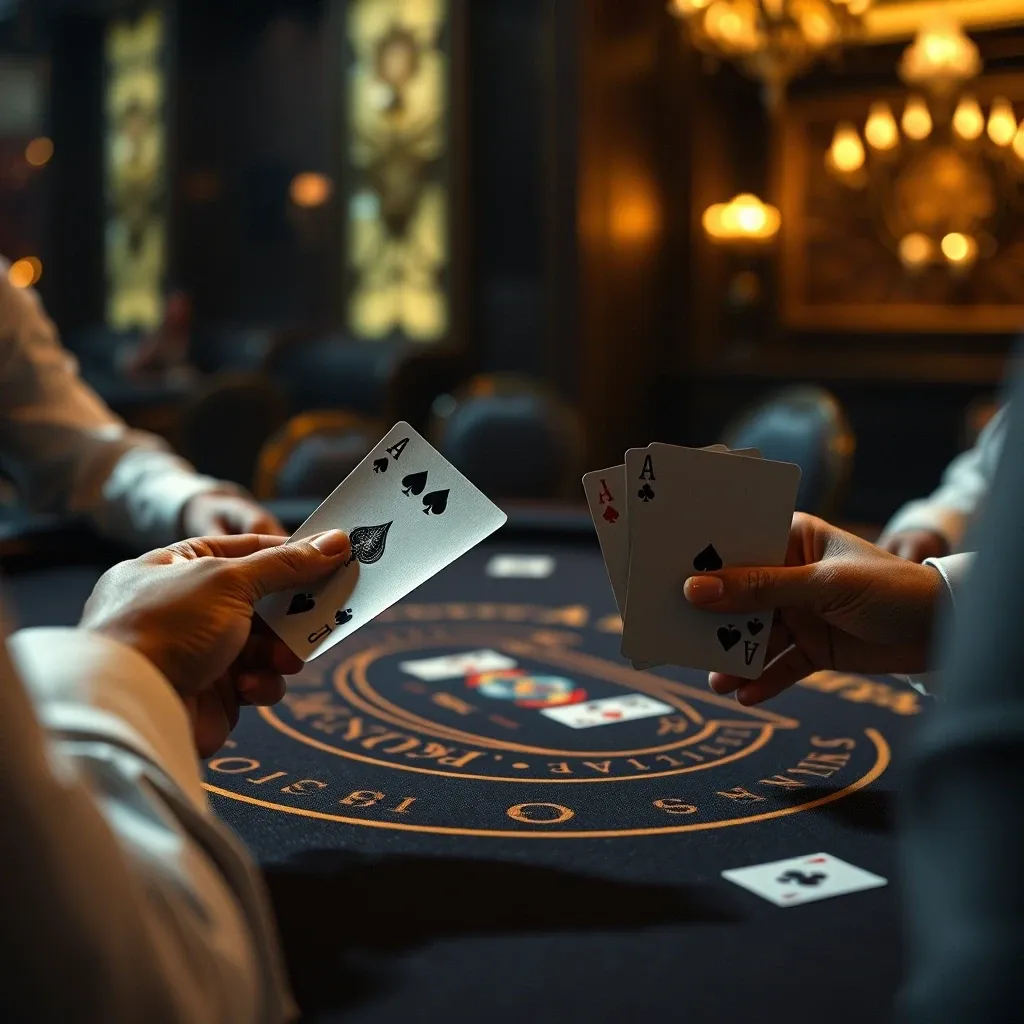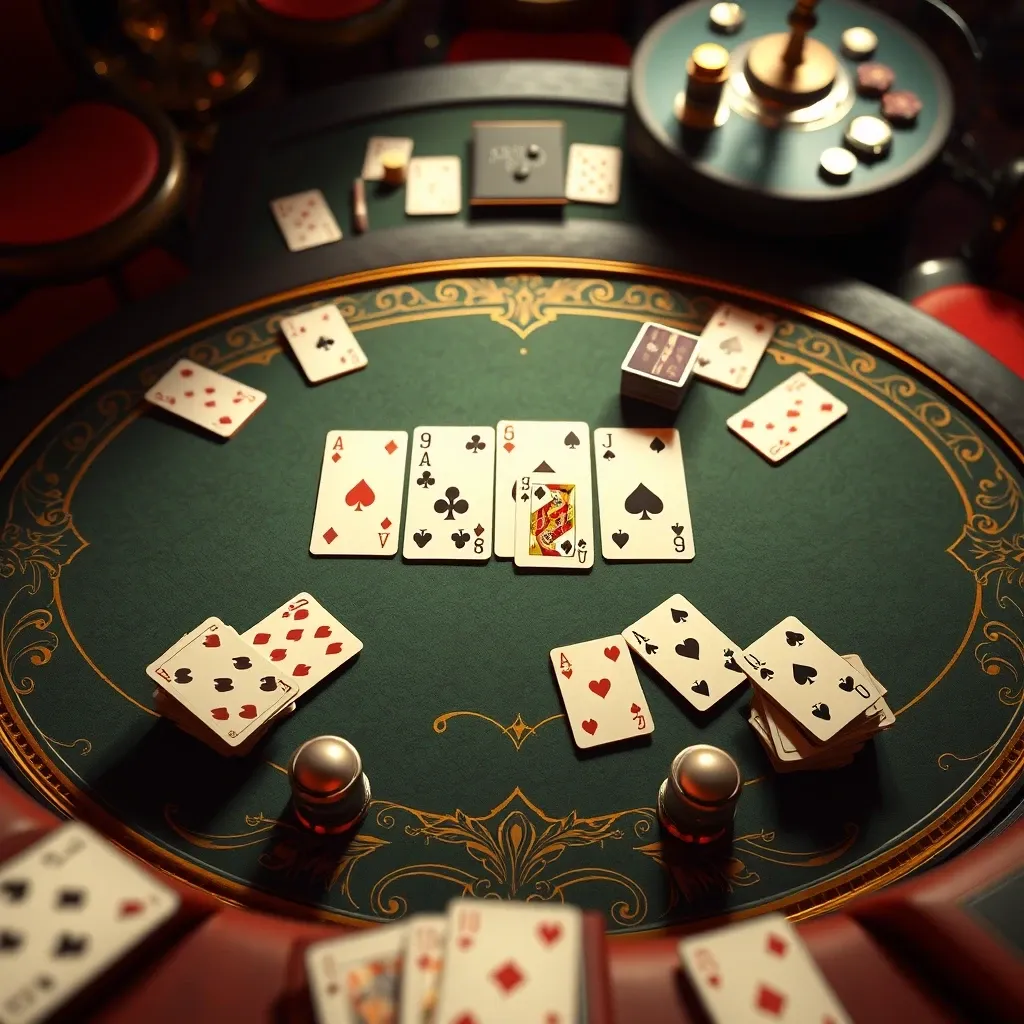Introduction
I remember the first time I walked into a casino, the blackjack table felt like a battleground. The dealer’s eyes, the murmuring crowd, the pressure to make the right move – it was overwhelming. What if I had known then what I know now: that the best way to conquer the blackjack table is to first conquer solo blackjack.
Solo blackjack, or blackjack solitaire as some call it, might sound like a lonely endeavor, or even worse, a pointless exercise. Some might think, “How can you possibly practice for a social game by playing alone?” But let me tell you, dismissing solo blackjack is a huge mistake, especially if you’re serious about improving your game.
This isn’t about replicating the casino atmosphere; it’s about mastering the fundamentals. This comprehensive guide will show you how, turning your solitary sessions into powerful blackjack training. From learning the rules inside and out to honing your strategic thinking, solo blackjack is a surprisingly effective tool, and this guide, based on my experience, is your key to unlocking its full potential. So, shuffle up and deal – let’s get started.
Understanding the Core Rules of Blackjack
Blackjack, at its heart, is a battle between you and the dealer. The goal is simple: get a hand value closer to 21 than the dealer without going over. Mastering the rules is the first step to enjoying – and potentially winning – at the table.
Card Values and Basic Actions
Before diving into strategy, let’s solidify the basics. Each card holds a specific value, and understanding those values is crucial. Numbered cards (2-10) are worth their face value. Face cards (Jack, Queen, King) are each worth 10. An Ace can be worth either 1 or 11, depending on which value benefits your hand the most. If an Ace valued at 11 would cause your hand to exceed 21, it automatically reverts to a value of 1. This “soft” Ace is a powerful tool in blackjack.
Once you receive your initial two cards, you have several options:
- Hit: Take another card. You can hit until you reach 21, or choose to stand.
- Stand: End your turn and keep your current hand.
- Double Down: Double your initial bet and receive only one more card. This is generally used when you have a strong starting hand, like a hard 11.
- Splitting Pairs: If you are dealt two cards of the same rank, you can split them into two separate hands. You must then bet an equal amount on the new hand. Each hand is then played independently.
These actions form the basis of all blackjack play. Knowing when and how to use them is key to developing a solid strategy.
Solitaire Blackjack: A Detailed Guide
Setting Up the Game
To kick off your solo blackjack adventure, grab a standard 52-card deck and give it a good shuffle. Deal two cards face up to represent your hand, the player’s hand. Then, deal two cards to the dealer’s position, one face down (the hole card) and one face up. This mimics the standard blackjack dealing procedure. As the solo player, you’ll control both your hand and how the dealer plays according to established rules. The initial setup is crucial for simulating the real casino environment.
Playing the Dealer’s Hand
Once you’ve played your hand, it’s time to manage the dealer’s. Flip over the dealer’s hole card. The core rule to remember is that the dealer must hit on any total of 16 or less, and stand on any total of 17 or more. A critical variation is the “hit on soft 17” rule, common in many casinos. A ‘soft 17’ is a hand containing an Ace counted as 11, along with cards totaling 6 (e.g., Ace-6). If the dealer has a soft 17, they must take another card. For example, if the dealer shows an Ace and a 6, you draw another card for them. If that card is a 2, the dealer now has 19 and must stand. If it’s a 4, the dealer has 21 adn also must stand.
Variations for Solo Play
For those who enjoy the strategic depth of blackjack but find themselves without a partner, fear not! The game’s core mechanics can be easily adapted to create engaging solo experiences. The key is to introduce variations in the standard rules that provide a sense of progression, challenge, and accomplishment. Forget simply aiming to beat the dealer; instead, think about how you can modify the game to create personalized objectives and reward systems. Blackjack variations aren’t just about altering the rules; they’re about crafting a solo adventure. Consider blackjack modifications that introduce unique scoring systems or level-based progression. Set personal blackjack goals for each session, transforming a solitary game into a focused and rewarding pursuit.
Challenges
To inject dynamism into your solo blackjack sessions, consider implementing a challenge system. Imagine a challenge mode where each game presents a specific objective, such as winning a hand with a particular card combination or reaching a certain bankroll target within a set number of rounds. Successfully completing blackjack challenges unlocks new levels, modifications, or even visual customizations to personalize your gameplay. These solo missions not only add tangible goals but also subtly encourage you to explore different betting strategies and risk management techniques.
Strategic Considerations for Solo Blackjack
Blackjack, even when played solo, hinges on making informed decisions. The cornerstone of sound blackjack play is understanding and applying basic strategy. Forget hunches or gut feelings; relying on a data-driven approach significantly boosts your chances of success.
Basic Strategy Chart
The basic strategy chart is your cheat sheet to optimal play. It maps out the best action (hit, stand, double down, split) for every possible combination of your hand and the dealer’s upcard. Learning to read and use a strategy chart is paramount.
Consider this simplified example:
- If you hold a hard 16 (no Ace, or an Ace counted as 1) and the dealer shows a 7, 8, 9, 10, or Ace, the chart will always tell you to Hit.
- If you hold a hard 12 and the dealer shows a 4, 5, or 6, the chart advises you to Stand.
These charts are readily available online and in blackjack books. Memorize it or keep one handy.
Practice Makes Perfect
Solo blackjack offers a fantastic, risk-free environment to drill these strategies into your muscle memory. There’s no pressure, no real money on the line, and all the time you need to consult your basic strategy chart with each hand.
Maximizing Your Practice and Skill Development
Solo blackjack isn’t just a game; it’s a powerful training tool. The key to unlocking its potential lies in structured practice and focused skill development. Instead of aimlessly playing hands, approach each session with a specific goal. For example, dedicate time to mastering a particular section of the basic strategy chart, such as hitting and standing against different dealer upcards when holding a hard 12-16.
Track your results meticulously. Note your wins, losses, and deviations from basic strategy. This data provides valuable insights into areas where you need improvement. Furthermore, solo play allows you to experiment with different betting strategies without risking real money. Simulate various scenarios, from flat betting to progressive systems, to understand their impact on your bankroll.
Personally, solo blackjack has been invaluable for refining my decision-making process. By focusing on specific scenarios and tracking my performance, I’ve been able to internalize basic strategy and develop a more intuitive understanding of the game. It’s not about winning the solo game; it’s about building the skills and confidence needed to succeed at the tables.
The Limitations of Solo Play
Solo blackjack offers convenience, but it’s crucial to understand its limitations as a substitute for the real casino experience. The sterile environment of solo play strips away key elements that make live blackjack so compelling. The absence of psychological pressure is a major factor. When playing alone, there are no prying eyes scrutinizing every decision. The social interaction with other players, and the dealer, vanishes. This removes the subtle cues/blackjack tells that many players rely on.
Similarly, the predictable nature of computer algorithms pales in comparison to a live dealer. The dealer may make unexpected plays that can drastically influence the game. Solo blackjack is excellent to practice basic strategy. However, it cannot replicate the multifaceted and often unpredictable environment of a real casino. To become a truly skilled blackjack player, one must eventually brave the real casino environment.
Alternatives to Solo Blackjack
Feeling a bit isolated battling the dealer alone in blackjack? While solo practice is valuable, several engaging alternatives can enhance your skills and inject some fun into your game. Consider exploring blackjack video games. These offer interactive experiences, often with engaging storylines and the ability to progress through different levels of difficulty. They can be a fantastic way to test strategies in a less pressure-filled environment than real money play. Think of them as a dynamic form of blackjack practice.
Beyond video games, numerous blackjack tools and resources can complement your solo sessions. Strategy charts, card counting trainers, and bankroll management apps are readily available to help you refine your approach. Finally, explore the world of online blackjack. Many platforms offer low-stakes games where you can interact with other players, simulating a casino environment without breaking the bank.
Conclusion
Solo blackjack offers convenience as a readily available blackjack learning tool that allows you to master blackjack strategies. It’s an ideal, stress-free environment for honing fundamental skills. However, remember that mastering blackjack requires real-world experience. Solo play cannot replicate the dynamics of live tables. Use solo practice as a launchpad. Understand its limitations, embrace its benefits, and then, start practicing today and see how solo blackjack can elevate your game!

